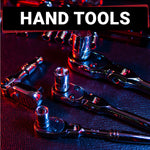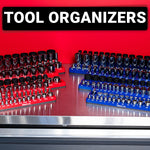Imagine that you want to remove a bolt and want to break it loose without worrying about damaging or rounding off the fastener, would you use an impact wrench or a breaker bar? There is a slight difference in work between them so when it comes to unfastening a really stubborn, rusted, or frozen bolt, one might work better than the other. We’ll discuss their different use cases to understand if what you need is a slow accurate force or a speedy power tool.
Impact Wrench

Source: depositphotos.com
During repair and maintenance tasks, you can use impact wrenches for both DIY and professional projects. Despite having the same purpose as a breaker bar which is loosening lug nuts with a lot of torque; the impact wrench provides much more acceleration using a hammering mechanism with either electric or air motors. The tool applies an intense twisting motion, creating short bursts of force that eventually loosen or tighten the fastener. You can use this tool for wheel hub assemblies, lower ball joints, upper control arms, or any other vehicle repair where fastening is required.
Breaker Bar
Breaker bars have long handles and a non-ratcheting mechanism that provide the tool with great torque generation power as well as power multiplication. These two mechanisms deliver more leverage than you would have with an impact tool, and this results in a much more effective tool than any other type of wrench. So, if you are not willing to suffer the consequences of making a mistake while working with a stubborn wheel nut, a breaker bar is necessary.
Impact Wrench vs. Breaker Bar Use Cases
Now that you know how these two tools work, understanding their use cases will help you make an informed decision. For stuck or rusted bolts, an impact wrench might be the best choice for you. The given reason is that the impact force and pressure push the bolt forward, and this is what loosens the fastener, helping the impact wrench work easier than you could hope with a breaker bar.
On the other hand, when it comes to removing really tight bolts or breaking free nuts at awkward angles where you barely have any space to move; the controlled leverage, shock-free torque, and the fixed head of this Olsa Tools breaker bar will quickly break fasteners loose and complete the job with ease.
Of course, everything depends on the condition of the fastener and the space you have available. Deciding factors include the drive size or how much torque the tool generates.
Some people start with an impact wrench and move on to a breaker bar if the other item failed to deliver the expected results.
If you only have simple but useful hand tools, using penetrating oils or applying heat with a torch can also help you break free rusted, decayed, stuck nuts and bolts. You can start with either of these options and finish the rest of the project with a breaker bar. Just beware of not using heat and penetrating oils or other inflammable material at the same time, as your tools could catch on fire and may result in unforeseen accidents.
Which Is The Most Efficient Tool?
As you can read, impact wrenches and breaker bars have slightly different use cases and you must decide which fits best for your needs. They definitely can be complementary tools as you might need one better than the other under specific circumstances. But, for those projects where nothing beats the leverage delivered by a breaker bar, this Olsa Tools 1/2" drive breaker bar is your best choice.
The tool exceeded ASME B107.110-2012 standards by 1.5x., meaning that it’s perfectly engineered for industrial and heavy-duty applications. The Chrome Vanadium (Cr-V) steel delivers lifetime reliability during the toughest jobs. Finally, all of our breaker bars are backed by a limited lifetime warranty, 90-day risk-free return policy, and 100% satisfaction guarantee. Shop our breaker bars below:












